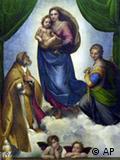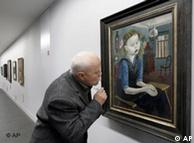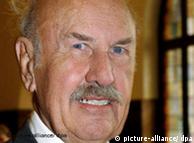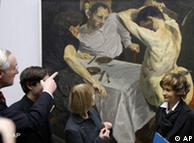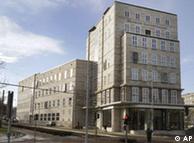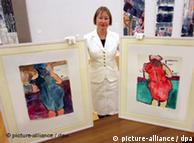這是上周紐約時報的"北京36小時 建議"
我想還是貼在這兒 供大家參考
(現在用外地的電腦 功能不相同)
36 Hours in BeijingAaron and Mimi Kuo-Deemer
By JAKE HOOKER
Published: December 9, 2007
BEIJING can feel chaotic and sprawling, especially as it races to finish Olympic construction before the Games begin on Aug. 8. But there's an ancient order to the place, a cosmology, and you can follow it. The palaces and temples line up like stars on the city's south-north axis. The government chose to build the Olympic Stadium on the axis, too. All over town there are digital billboards with a countdown to the Games. Down to the second. But wait. Besides the cranes and compact cars and floating particulate matter, everything essential about the city — its tall vermilion walls, its septuagenarians flying kites on bridges, its pigeons — has been there all along.
Skip to next paragraphBeijing Travel GuideWhere to StayWhere to EatWhat to DoGo to the Beijing Travel Guide »Multimedia
Map Beijing, ChinaSlide Show Weekend in BeijingFriday
3:30 p.m.1) GREEN GETAWAY
Once the private
garden of Ming and Qing emperors,
Beihai, set beside the Forbidden City, may be the most beautiful public park in
China. There are Buddhist temples by the lake, the footpaths lined with willow trees, and the provincial tour groups wearing identical baseball hats. The northern entrance to a private garden called Jingxinzhai (24 Dianmen Xidajie; 86-10-6406-2279;
www.beihaipark.com.cn) closes at 4 p.m. in winter and an hour later in summer, so first visit this private world of pavilions, fish ponds and rock gardens. Sometimes an orchestra gathers by the big lake, and the locals sing songs, drink tea from thermoses and read about the stock market and price of eggs in the Beijing Evening News. There is an inward tendency in the Chinese character, and these walled gardens were designed to shut away the outside world.
5:30 p.m.2) THE CENTER OF THE WORLD
After your respite, see the heart of the city on foot. After taking in the scale of the Forbidden City from outside the north moat, follow the narrow street, Beichang Jie, under the dark leaning scholar trees. You'll pass by What? (72 Beichang Jie; 86-133-4112-2757), a tiny rock bar that affords sidewalk wicker chairs and a glimpse of street life: migrant workers, high school students, young soldiers and black Audis with tinted windows keeping watch over the sealed leadership compound of Zhongnanhai. At the southern end of the street, turn left onto the Avenue of Eternal Peace, and walk east along the boulevard, past past the soldiers clearing Tiananmen Square, and the lovers in the shadows of the big trees . You are in the center of the city, which, in the Chinese mind, is at the center of the world. And it feels that way.
8 p.m.3) DUCK FOR DINNER
The headless ducks hang from black hooks, ready for the brick ovens. Eleven Chinese cooks in dark pinstriped pants handle them with long poles, with a grouping of little porcelain ducklings looking on. The dining room of the
Dadong Roast Duck Restaurant (22 Dongsishitiao; 86-10-5169-0328) is rowdy, as Chinese restaurants are supposed to be, and the braised eggplant is sweet and good. The skin of the lean
bird is crisp, and its meat — wrapped in a thin pancake with spring onions and a sweet dark sauce — washes down nicely with red wine or beer.
10 p.m.4) ANTIQUES AND SANGRIA
Beijing's best known bar strip, the Sanlitun neighborhood, is a playground for hookers, expatriates and Nigerian drug dealers. Instead, take a cab to the Drum and Bell Towers, and slip into the hutongs, or historic alleys, heading north, toward
Bed Bar (17 Zhangwang Hutong; 86-10-8400-1554). Look for a red lantern down a long, quiet lane. A converted machine-parts factory decorated with antique furniture and paintings of the old city, Bed is a pleasant place to drink sangria, talk with friends, and drink more sangria. If you're with a group, reserve a private room overlooking the courtyard.
Saturday
9:30 a.m.5) RITUALS, OLD AND NEW
Built by the Ming emperor Yongle in 1420, the Hall of Prayer for Good Harvests is a masterpiece of Chinese religious
architecture. The hall was one of many altars inside the kingdom's largest complex for ritual sacrifice, the Temple of Heaven, or Tiantan (86-10-6702-8866;
www.tiantanpark.com/cn). Twenty-two emperors came here to make sacrifices to heaven, affirming their divine role as ruler and shaman. Nowadays, in the
Long Corridor through which ritual offerings once passed, crowds of retirees play poker, Hacky Sack and the two-stringed erhu.
Noon6) DOSE OF REALITY
The government understands that the sacred axis of the imperial city will also be the axis for tourists this summer and is preparing accordingly. Go north from the west gate of the
Temple of Heaven and you will be impressed by the tidiness, the fresh paint, the grassy lawns. But wander down any of the hutongs of the Qianmen area, south of Tiananmen Square, and you may have a different — and more textured — impression. A battlefield between developers and conservationists, this famous neighborhood of provincial guilds, opera houses, bordellos and hot pot restaurants is in epic flux. Some hutongs have been razed, and some still bustle with cheap restaurants, backpackers, butcher shops and crowded courtyard homes. The nearby Beijing Planning Exhibition Hall (20 Qianmen Dongdajie; 86-10-6702-4559;
www.bjghzl.com.cn) puts the conflict in context.
1 p.m.7) SOUTHERN COOKING
Kong Yiji serves food from Shaoxing, a southern town famous for its
wines, bridges and canals. The restaurant (322 Dongsi Beidajie; 86-10- 6404 0507) is named after the failed scholar (and tavern crawler) of the Lu Xun short story. The aniseed-flavored kidney beans and scallion oil yellow fish are good, and a meal for two costs about 150 yuan, $20 at 7.5 yuan to the dollar, without the sweet yellow rice wine. After lunch, hop a cab to the lake district, where you can climb either the Drum or Bell Tower (Zhonglouwan Hutong; 86-10-6401-2674) and take in the cluttered courtyards, the crazy flying pigeons and the endless sprawl of buildings to the Western Hills.
4 p.m.8) A STUDY IN QUIET
For centuries, the top young scholars on civil service examinations went to the
Guozijian, or Imperial Academy (15 Guozijian Jie; 86-10-8402-7224), to study Confucian classics and learn to write in a beautiful hand. Today, it is a quiet place to read a book or just sit by the pavilion where the emperor gave his annual lectures. High school seniors are dragged there by their parents in June to pray for good college test scores.
7:30 p.m.9) KARMA SERVED MEATLESS
Pure Lotus (China Wenlian Courtyard, Changhong Bridge; 86-10-6592-3627) is a
vegetarian restaurant whose décor — a lotus motif stenciled from Silk Road grottoes, an altar of fresh flowers, candles in bamboo holders — seems destined for Manhattan. Loyal to the monastic ethic, the restaurant serves no alcohol, and Chinese customers address the robed monk who runs the joint as “shifu,” or master. Try the creamy pumpkin porridge and the zen spicy stewed vegetarian fish, a Sichuanese number. A meal for two, with a pot of green tea, is about 300 yuan. The dishes have ridiculous karmic names (“Destiny Comes Together as a Cold Plate,” “Yoga Apple Salad”) and some are served amid floral bouquets and dried ice mists, so cynical thoughts should be channeled. Reserve a table in the beautiful main dining room, where the servers sing folk songs.
11 p.m.10) A LITTLE NIGHT MUSIC
Centro (1 Guanghua Lu; 86-10-6561-8833 extension 42;
www.shangri-la.com) is a lounge in the
Kerry Centre Hotel in the desolate central business district where Western men in pinstriped suits and Chinese women with pearls drink, flirt and listen to jazz standards. The younger, and more adventurous, will head to faraway
D-22, a rock club in the city's university district (242 Chengfu Road; 86-10-6265-3177;
www.d22beijing.com). In a country where the radio waves are controlled by the party and love songs by pretty girls are ubiquitous, rock 'n' roll is still considered esoteric. The house bands at D-22 — Carsick Cars, Hedgehog and others — are trying to change that.
Sunday
10 a.m.11) CAPITALISM AT WORK
The
Panjiayuan “antiquities” market (18 Huaweili; 86-10-6774-1869;
www.panjiayuan.com) is a lively weekend meeting of scam artists and tourists. Bronze tripods from the northern plains, teapots made from special sand in Jiangsu province, 1920s cigarette posters from
Shanghai — anything remotely of interest to collectors has been carefully manufactured and, to the rare fool, will be sold for real prices. There's authentic stuff, too. On the plaza's edge, Cultural Revolution shops sell the souvenirs of 1966-76, including black and white photos from discarded family albums — detritus of a city in flux.
The Basics
Beijing Capital International Airport is scheduled to open its new Terminal 3 in time for the Olympics. Round-trip direct flights on Continental, from Newark, or Air China (a code share with United), from Kennedy Airport, run about $950, though fares will certainly rise by summer. (An early December online search for a round-trip ticket to Beijing around the time of the Games showed fares starting above $2,200.)
Taxis from Capital airport cost about 100 yuan, about $13 at 7.5 yuan to the dollar, and come the Olympics, budget travelers will be able to take a new airport express rail link to the subway at Dongzhimen.
The
Grand Hyatt (1 Dong Changan Jie; 86-10-8518-1234;
www.beijing.grand.hyatt.com) is within walking distance of the Forbidden City, Tiananmen Square and many interesting hutong neighborhoods. Doubles are 1,450 to 3,500 yuan.
For a hutong courtyard experience, try
Hotel Côté Cour SL (70 Yanyue Hutong; 86-10-6512-8020;
www.hotelcotecoursl.com), starting at 1,295 yuan, or the
Bamboo Garden (24 Xiaoshiqiao Lane; 86-10-5852-0088;
www.bbgh.com.cn), a Qing official's mansion, from 880 yuan.
Room rates are expected to double or even triple for the Olympics; at the Bamboo garden, they start at 3,000 yuan for those weeks.

